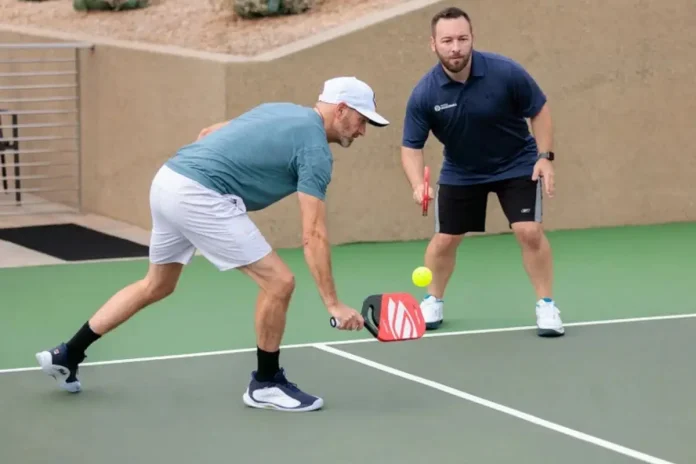Pickleball Shot Control Techniques: Pickleball coach Spencer Johnson from Pickle Ball Daily shared simple ways to improve shot control during a training video. He explained four main factors that decide where the ball goes—paddle angle, paddle momentum, body movement, and paddle position at contact. These basics help players keep the ball low, steady, and hard to attack.
Paddle Angle Sets the Direction
Spencer Johnson said the first and most important factor is the angle of the paddle. A closed paddle face sends the ball down, while an open face lifts it higher. The wrist controls the angle, so players must keep the paddle steady and pointed where they want the ball to travel.
Paddle and Body Momentum Add Energy
The second factor is paddle momentum. Moving the paddle forward, upward, or from different directions changes how far and high the ball travels. Body movement is the third factor. Stable feet provide better control, but stepping or shifting during contact adds extra energy and can push the ball too far.
Contact Point Improves Accuracy
The fourth factor is where the paddle strikes the ball. Hitting underneath the ball gives it lift, while hitting on top drives it down. For soft dinks, Spencer Johnson advised keeping the paddle slightly angled up, striking just below the middle of the ball, and moving the paddle forward to guide it over the net.

Practice Builds Consistency
Spencer Johnson encouraged players to practice stable footwork and smooth paddle movements. By focusing on angle, momentum, and contact, players can hit with more precision and confidence. Mastering these steps helps prevent errors, keeps rallies under control, and creates more winning opportunities.
News in Brief: Pickleball Shot Control Techniques
Coach Spencer Johnson shared four simple tips for better pickleball shots: control paddle angle, guide paddle momentum, stay steady with body movement, and hit the ball at the right spot. These steps help players keep the ball low, accurate, and harder for opponents to attack.
ALSO READ: Ditch Your Backhand: How the Inside-Out Forehand Is Revolutionizing Pickleball Play

